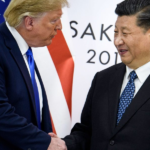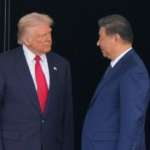For those not versed in blockchain jargon, stablecoins are a type of cryptocurrency pegged to an underlying asset, such as a fiat currency or a commodity like gold, and designed to stay at a certain price. By far, the most popular version has been dollar-backed stablecoins, with the market leaders Tether and USDC holding a combined market capitalization of over $200 billion.
While stablecoins serve an obvious utility for crypto players, who can settle and store capital in dollar-like assets without having to move back and forth between cryptocurrencies and fiat, they’re becoming increasingly feasible for a number of non-crypto use cases, from remittances to global payroll. Other than Bitcoin, stablecoins are poised to become the long-awaited “killer app” that crypto evangelists have long promised, though the technology itself is still in its early days.
OpenFX is one layer more abstract. The major roadblock for stablecoins has always been that, while moving around crypto dollars may be near instantaneous and free, getting those crypto dollars into actual dollars (or other currencies) still means relying on the same old rails that blockchain is trying to replace. Until your neighborhood grocery store, and the neighborhood grocery store in Argentina and Nigeria, start accepting Tether or USDC, it doesn’t matter how fast and cheap stablecoins are. This is the so-called “last mile” dilemma, and it’s where OpenFX comes in.
Before starting OpenFX, Reddy was an investor at Accel in India and a serial entrepreneur, though his most successful company was his last—the institutional-focused crypto brokerage firm FalconX, which he decided to build after trying to do large block trades of crypto himself while at Accel. FalconX was last valued at $8 billion. While working on FalconX, Reddy began to see how global cross-border money movement worked, facilitated by the SWIFT network between financial institutions. “I saw how broken and fragmented it was,” Reddy told me. “All these ideas started churning behind the scenes.”
He decided to start work on OpenFX, which would help realize 24/7/365 money movement by solving the last-mile problem. Reddy said his goal is to supplant SWIFT. While Bridge and BVNK help companies adopt stablecoins as a payment rail, OpenFX will help move between fiat and stablecoins on the backend, as well as rework the costly foreign exchange process by using stablecoins as the intermediary to reduce fees, hence the startup’s name.
OpenFX started coding its product in early 2024, with the first trade executed in March 2024. Reddy declined to name any clients, but said OpenFX is targeting fintech 2.0 companies such as remittance companies, neobanks, and payroll processors—think Nubank, Revolut, and Remitly. They’re currently live with seven currencies—including dollars, euros, and Mexican pesos—with a plan to expand to 10 by the summer, including in Southeast Asia.
Reddy says that OpenFX is able to bring FX spreads down from around 69 basis points to sub-10, with 90% of its transactions settling in 60 minutes. If successful at scale, it could be enough of a technological leap for stablecoins to take off beyond pilots and experimentation. “We’re building this company with one single mission,” Reddy told me. “To make money move across borders as seamlessly as data.”









